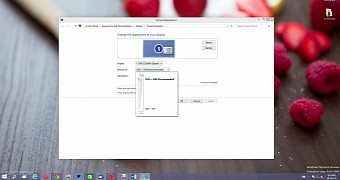Windows 10 bundles all kinds of improvements, some of which cannot be found until you look under its hood and try to perform some of the tasks that weren’t supported before in older OS versions.
For example, the new Windows 10 Technical Preview build 9860 comes with support for 1024 x 600 pixel displays, which is living proof that Microsoft is indeed working to make the new operating system available on smaller screens as well.
Liliputing installed the recently released Windows 10 build on an Asus Eee PC 1000H which, needless to say, comes with very old hardware that at first glance might not seem too appropriate for a new operating system that’s in the works right now at Microsoft.
Surprisingly, while it doesn’t run quite smoothly on a configuration which includes a 1.6 GHz Intel Atom N270 single-core processor, 1 GB of RAM, and an 80 GB hard drive, the new Windows 10 seems to get along very well with the 10.1 inch display with a resolution of 1024 x 600 pixels.
Also possible in Windows 8.1, but at a cost
Running Windows on such a small screen was also possible in Windows 8.1, but the biggest difference was that you weren’t allowed to install any applications from the Windows Store.
Whenever you tried to do that, the store provided an error saying that your screen resolution was too low, so your only option was to use Windows 8.1 as it was, without any additional Metro apps.
Everything is going to change in Windows 10 though, as the new and revamped OS version appears to be much better optimized for smaller displays, so Metro apps and everything else should work on older configurations as well.
It could run on Windows XP systems as well
Microsoft’s goal from the very beginning was to develop an operating system capable of running on devices of all sizes, starting with smartwatches and ending with Perceptive Pixel touchscreens measuring 80 inches in size.
But at the same time, the company also tweaked Windows 10 for older configurations, so it has the same system requirements as Windows 8.1, asking for 1 GB of RAM for the 32-bit version and 2 GB for the 64-bit one, a processor of at least 1 GHz, and 16 GB of free space for the original installation.
If Windows 10 runs fine on an Asus Eee PC that is six years old, expect it to get along nicely with most Windows XP configurations as well, but there’s no doubt that for a smoother experience you’ll need to upgrade your hardware configuration.

 14 DAY TRIAL //
14 DAY TRIAL //